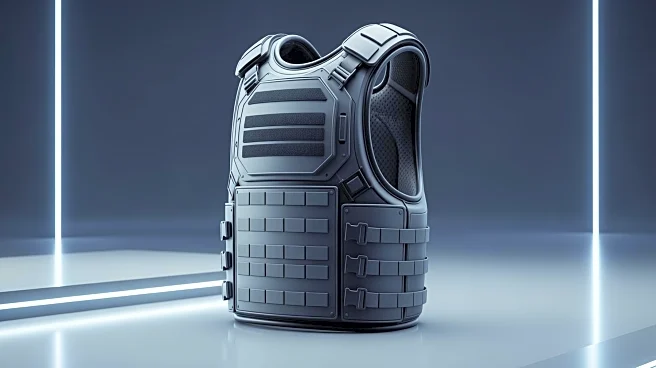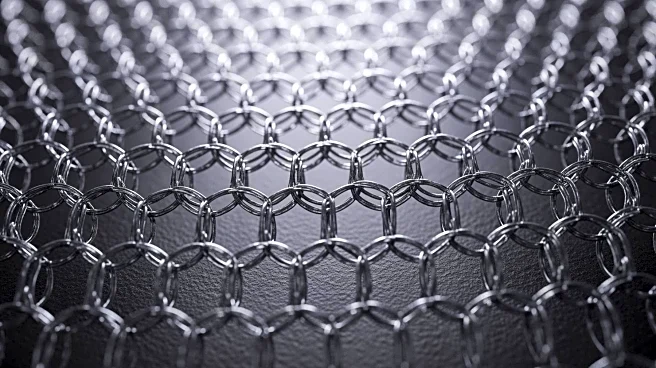What's Happening?
Scientists have developed a new composite material that surpasses Kevlar in strength and toughness, offering superior protection against high-speed impacts such as bullets. This new fiber, created by Jin Zhang and his team at Peking University, combines
heterocyclic aramid fibers with treated long carbon nanotubes (tl-SWNTs). The innovative approach involves aligning the aramid chains and carbon nanotubes in a straight and parallel manner, enhancing the material's ability to absorb energy without breaking. The new fiber achieved a dynamic strength significantly higher than existing fibers and doubled the previous record for energy absorption, reaching 706.1 megajoules per cubic meter. When woven into fabric, it demonstrated superior anti-ballistic performance compared to current protective materials.
Why It's Important?
The development of this new fiber has significant implications for industries reliant on protective gear, such as law enforcement and military sectors. By offering a material that is both stronger and lighter than Kevlar, it could lead to advancements in body armor and vehicle protection, enhancing safety while reducing weight and bulk. This breakthrough could also influence the materials science field, providing insights into achieving high strength and toughness simultaneously, a common challenge in the industry. The potential for lighter and more effective protective gear could result in increased mobility and comfort for users, potentially saving lives in critical situations.
What's Next?
The next steps involve further testing and potential commercialization of the new fiber. If successfully integrated into protective gear, it could revolutionize the design and effectiveness of body armor and other protective equipment. Stakeholders such as defense contractors and law enforcement agencies may express interest in adopting this technology, leading to collaborations for mass production. Additionally, ongoing research may explore other applications of the fiber, such as in aerospace or automotive industries, where lightweight and durable materials are highly valued.
Beyond the Headlines
Beyond immediate applications, this development could spark ethical discussions regarding the accessibility and distribution of advanced protective materials. Ensuring that such innovations are available to all sectors, including civilian markets, could be a point of debate. Furthermore, the environmental impact of producing these materials, particularly the use of carbon nanotubes, may require consideration and sustainable practices to mitigate potential ecological effects.














